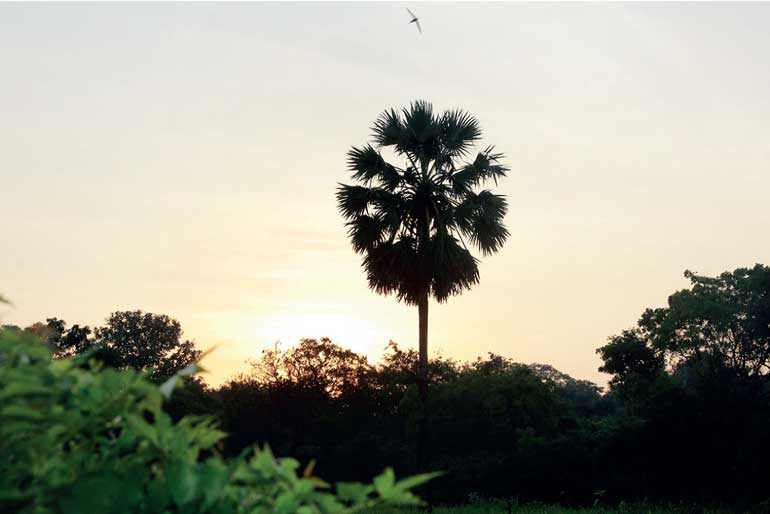Sunday Dec 07, 2025
Sunday Dec 07, 2025
Saturday, 2 October 2021 00:10 - - {{hitsCtrl.values.hits}}

Climate fiction and other forms of creative writing about climate and the environment can showcase different perspectives and provide glimpses into a better future – Pic courtesy SLYCAN Trust
 Climate change has a growing impact on daily life and will become more noticeable and intense over the coming decades. From heat waves to floods and storms, from sea level rise to periods of drought and animal species changing their habitats, there are few areas of life which will be left untouched. However, this fact is not yet reflected in the narrative media we consume. Whether we look at movies, TV series, novels, or theatre plays, most of them do not include climate change as a significant dimension of their storytelling.
Climate change has a growing impact on daily life and will become more noticeable and intense over the coming decades. From heat waves to floods and storms, from sea level rise to periods of drought and animal species changing their habitats, there are few areas of life which will be left untouched. However, this fact is not yet reflected in the narrative media we consume. Whether we look at movies, TV series, novels, or theatre plays, most of them do not include climate change as a significant dimension of their storytelling.
Climate fiction, sometimes shortened as cli-fi, is an attempt to change this. As an emerging genre, it tells stories that include climate change as a vital element, usually set in the present or near future. These stories illustrate and feature the impacts of climate change on people and ecosystems. On the one hand, they can show suffering and losses, giving a human face to climate impacts; on the other hand, they can highlight possible solutions and better futures. In this way, creative writing and other art forms that focus on climate change can not only increase awareness of the world as it is, but also provide blueprints for change and calls to action.
The setting itself can be a key focus in climate fiction, as the world inside and outside the story undergoes an irreversible transformation. Many narratives are driven by the ambitions of their protagonists, who encounter and overcome resistance against their actions: but what if they are faced with something as vast and systemic as climate change, something that cannot be completely overcome? How do changes in climate lead to changes in society? How can people react and adapt these changes? Which parts of life will have to transition, which will stay the same? Are there things we will have to abandon, and what will we replace them with?
Telling stories about climate change also offers a great chance to experiment with style and narrative structure. A lot of published media follows a three- or five-act structure, but alternative ways of storytelling exist around the world. For example, the Japanese Kishōtenketsu structure can tell engaging stories without conflict, stories that only rely on a development and a twist instead of competing interests and confrontation. There are countless other traditional and indigenous ways to tell stories, including in a circular or repeating fashion, in non-linear, looping, and intersecting ways, or even through “daisy-chain” plots that follow an object or idea without a main character.
New structures and new questions can be starting points to explore complex topics related to climate change, such as the role of humanity and potential ways to deal with the double challenge of reducing emissions and adapting to climate impacts.
Climate fiction and other forms of creative writing about climate and the environment can showcase different perspectives and provide glimpses into a better future. They can give voices to vulnerable or marginalised groups and allow their experiences to be shared and understood by a larger audience. In the end, climate change is a topic everyone in the world is faced with, and one that should be reflected in the stories we tell.
(The writer works as Director – Research & Knowledge Management at SLYCAN Trust, a non-profit think tank based in Sri Lanka. His work focuses on climate change, adaptation, resilience, ecosystem conservation, just transition, human mobility, and a range of related issues. He holds a Master’s degree in Education from the University of Cologne, Germany and is a regular writer to several international and local media outlets.)